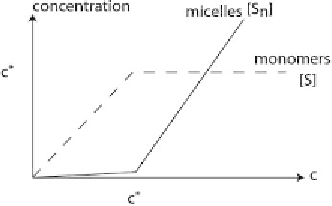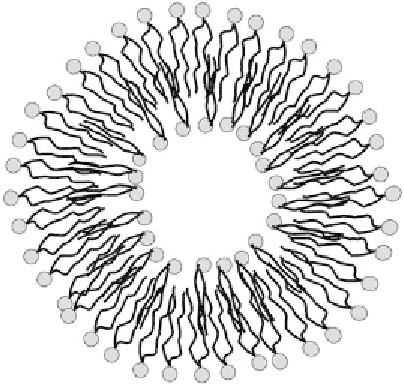Biomedical Engineering Reference
In-Depth Information
Figure 8.9
Phase diagram of amphiphile molecules. Above the cmc, surfactants predominantly
assemble in micelles.
Micelles are not restricted to small surfactant molecules. In particular, some
block copolymers can be tailored to make micelles particularly well suited to drug
delivery applications. In this last case, chemists have been quite imaginative in de-
signing molecules with the right lengths and the right chemistries that self-assemble
in micelles and can contain an organic drug in their core. These micelles can specifi-
cally target particular cells in an organ without releasing the drug too early or being
destructed too soon by the defense mechanisms.
The surface area per molecule in these aggregates results from a balance be-
tween attractive tail-tail interactions and repulsive head-head interactions. From
geometric arguments, when the tail group of these molecules is too bulky for a
good packing into micelles, bilayers can self-assemble and lead to the formation of
vesicles. This is for instance the case for most of 2-chains surfactants such as phos-
pholipids that are the major constituents of cell membranes (Figure 8.10).
Cell membranes based on these structures incorporate membrane proteins that
have a hydrophobic domain interacting strongly with the aliphatic chains of the
lipids. We have seen earlier that the structure determination of proteins is often per-
formed by diffraction techniques and thus needs them to be crystallized. However,
Figure 8.10
Schematic view of a bilayer vesicle.



